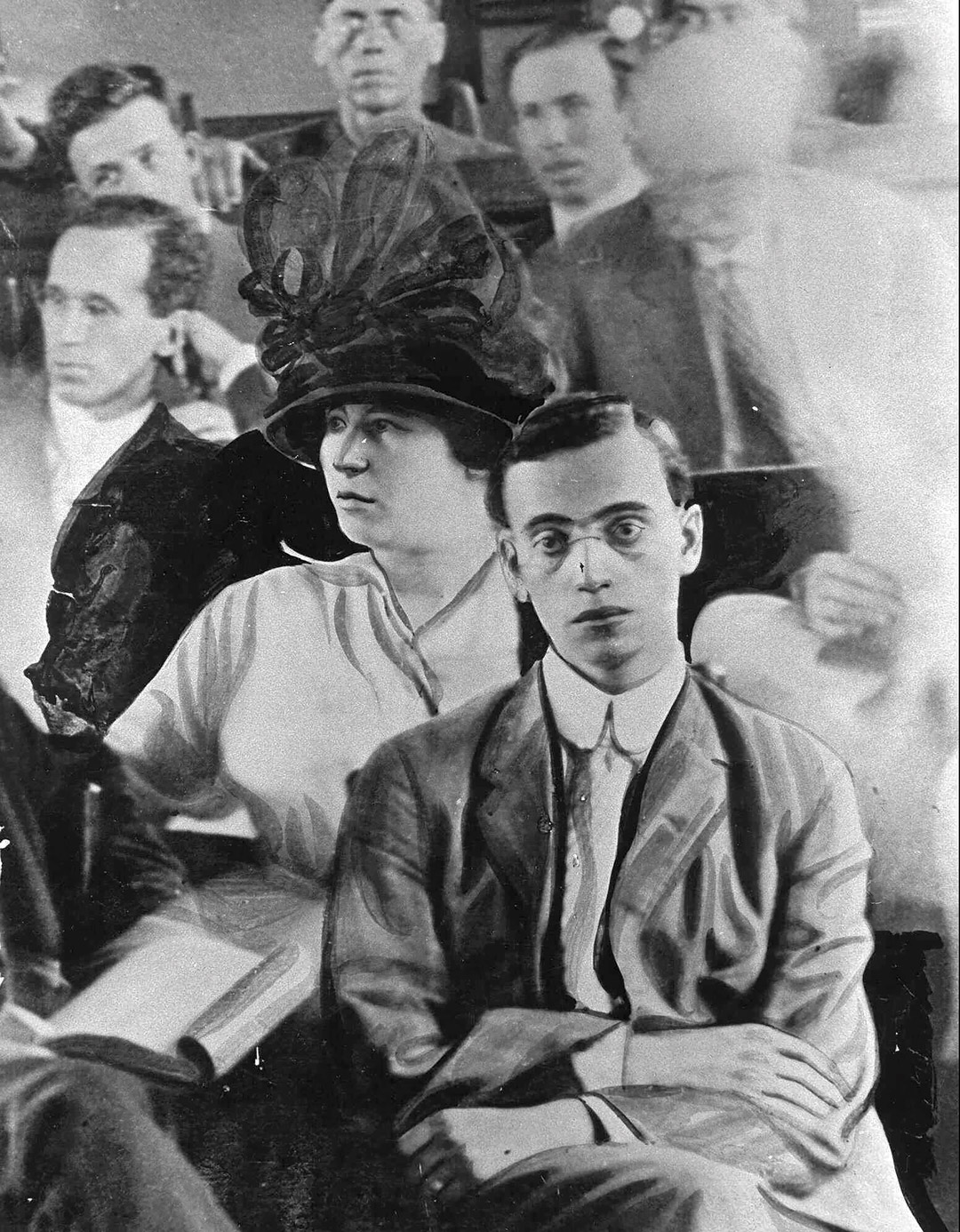Jewish Group
Related: About this forum(Jewish Group) Jewish American History Month: Leo Frank
The success of the Broadway musical Parade has rekindled interest in the Leo Frank case. In 1913, Frank was convicted of murdering Mary Phagan, a 13 year old employee of the Atlanta pencil factory that Frank managed. After his death sentence was commuted by Georgia's governor, a mob stormed the prison where Frank was being held and lynched him. Frank became the only known Jew lynched in American history. The case still spurs debate and controversy — along with Broadway success. What are the facts of the Frank case?
“Little Mary Phagan,” as she became known, left home on the morning of April 26 to pick up her wages at the pencil factory and view the Confederate Day Parade. She never returned home. The next day, the factory night watchman found her sawdust-covered body in the factory basement. When Frank, who had just completed a term as president of the Atlanta chapter of B'nai B'rith, was asked to view the body, he became agitated, confirmed personally paying Mary tier wages, but could not say where she went next. Frank, the last to see Mary alive, became the prime suspect.
Georgia's solicitor general, Hugh Dorsey, sought a grand jury indictment against Frank. Rumor circulated that Mary had been sexually assaulted. Factory employees offered apparently false testimony that Frank had made sexual advances toward them. The madam of a house of ill repute claimed that Frank had phoned her several times, seeking a room for himself and a young girl. At a time when the cult of Southern chivalry made it a “hanging crime” for African-American males to have sexual contact with the “flower of white womanhood,” these accusations against Frank, a Northern-born, college-educated Jew, proved equally inflammatory.
For the grand jury, Hugh Dorsey painted Leo Frank as a sexual pervert who both was homosexual and preyed on young girls. What he did not tell the grand jury was that a janitor at the factory, Jim Conley, had been arrested two days after Frank when he was seen washing blood off his shirt. Conley then admitted writing two notes found by Mary Phagan's body. The police assumed that, as author of these notes, Conley was the murderer; but Conley claimed, after apparent coaching from Dorsey, that Leo Frank had confessed murdering Mary in the lathe room and paid Conley to pen the notes and help him move Mary's body to the basement.

Lynching of Leo Frank, Marietta, Georgia
August 17, 1915. Postcard, gelatin silver print. Library of Congress Prints and Photographs Division
more...
Did Leo Frank kill Mary Phagan? 106 years later, we might finally find out for sure.
In early May, Fulton County District Attorney Paul Howard announced that he will reopen one of the most notorious criminal proceedings in American history: the trial of National Pencil Company superintendent Leo M. Frank for the murder of child laborer Mary Phagan. The review will be supervised by the newly formed Conviction Integrity Unit, a panel created to look into cold cases. Former governor Roy Barnes will serve as a consultant. Standing at Howard’s side during a news conference, Barnes said, “There is no doubt in my mind that we’ll prove that Leo Frank is not guilty.”
If the judgment of time is the deciding factor, the unit will indeed find Frank innocent. In the years since the April 26, 1913 murder, a consensus has emerged about what happened in Frank’s downtown Atlanta factory that day: The killer was Jim Conley, a black janitor who was the state’s star witness against Frank. While researching And the Dead Shall Rise, my 2003 book on the case, I reached the same conclusion. This is not, of course, how Georgians first saw it. An all-white jury accepted Conley’s word over that of Frank, his Jewish boss, and the judge sentenced Frank to die by hanging.
The spectacle of a Jim Crow–era court relying on a black man’s testimony to convict a white man of murder was remarkable, but the nation remembers the case because of what happened next. Following extensive coverage in the press and appeals that ran all the way to the United States Supreme Court, Governor John Slaton commuted Frank’s death sentence in June 1915. Shortly thereafter, a group of men from Marietta, Phagan’s hometown, abducted Frank from the Georgia prison farm in Milledgeville, drove him to Marietta, and lynched him. Several months later, the Ku Klux Klan, which had disbanded following Reconstruction, reestablished itself at a cross-burning atop Stone Mountain.
The Frank case opened a deep vein of anti-Semitism in America, unleashing furies that remain part of the national psyche. (The Anti-Defamation League was founded in 1913 to combat those furies.) As a result, any discussion of the subject is difficult. Emotions about it run strong, and, while a majority now believes the factory superintendent was guiltless, others resent what they regard as a knee-jerk acceptance of that fact. Howard’s investigators will need to keep this in mind if they are to vindicate Frank. The affair pitted Jew against Gentile, white against black, rural against urban. Regardless of the outcome, not everyone will be happy.

Leo Frank on trial in August 1913
more...